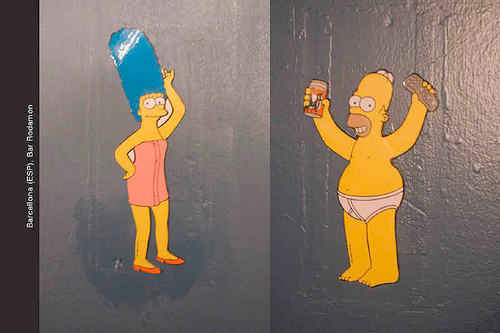(an occasional piece by Pardis Mahdavi)
Exactly one year ago this week, my first book, Passionate Uprisings: Iran’s Sexual Revolution was published. The book, based on fieldwork conducted between 2000 and 2007 with Tehrani youth, looked at ways in which the discourse on sexuality was changing and how these changes in sexuality were linked to a larger social movement as articulated by the Iranian youth themselves. When I began reading the reviews of my book (not recommended for the thin-skinned first time author), my stomach churned. “Is sexuality really political?” some reviewers asked, “do the sartorial changes in youth fashion or behavior have deeper reaching impact?” others wrote, “how deeply do these sexual behaviors penetrate Iranian society?”, “could sex unseat the Mullahs?” while still others asked (on Savage Minds in fact) “is ‘pretty’ the new protest?”. When I talked about my research with my students, some of the same questions came up. At first, I was frustrated, angry even. What part of my clarifications and caveats had readers and students missed? Then I realized, my mistakes were twofold: 1) I had conflated the idea of a sexual revolution (think sexual revolution a-la 1960s Greenwich Village) with the social movement that was inspiring young people to lobby for social change, and 2) I was describing only a few appendages of a larger “body that was then searching for a head” (as Robin Wright has said) – which it found this past summer in presidential candidate Mir Hossein Mussavi. But let us start with the first problem.
The phrase “sexual revolution” or enqelab-i-jensi (in Persian) was one that came organically from my interlocutors, and was not one that was placed on them by me or any other academic or journalist. Young people and their parents would talk about a change in the discourse around sexuality and heterosexual and heterosocial relations. This was referred to as their sexual revolution. Thus, when talking about “Iran’s Sexual Revolution” the focus must remain on the phrase ‘sexual revolution’ without detaching the words to ask “is sex revolutionary?” Sex, in itself, is not leading to a revolution. Neither I, nor my interlocutors were trying to claim this, however, a “sexual revolution” refers to a revolution, or perhaps more accurately put, a change, in the way in which we think, act, or talk about sex. To that end, young people and many others in Tehran had achieved their goals in that sex was talked about and thought about in different ways than it had been in the decades before. What is important to note, however, is that this sexual revolution was just one part of a larger movement that my interviewees referred to as a sociocultural revolution or enqelab-i-farhangi. This social movement encompassed behaviors such as pushing the envelope on Islamic dress, sexual behaviors, heterosocializing, driving around in cars playing loud illegal music, partying, drinking, dancing, the list goes on to include basically, young people doing what they aren’t supposed to do under Islamic law. But, many people ask, don’t youth everywhere do these things? What sets youth in Iran apart from their counterparts say in Texas? The answer is this: 1) the stakes are much higher – in Iran, you could get arrested for engaging in these behaviors and the consequences could include long term imprisonment, lashings and other abuse, 2) engaging in these behaviors are often a step for many to becoming politically active. Everything in Iran is political and politicized. The regime in power has politicized Islamic dress, certain types of music, even certain websites. Those violating its rules are harassed, punished, sometimes forced to leave the country. Many young people in Iran have become inspired to engage in political activism through their involvement in these social movements.
This leads us to the second problem, the body looking for the head. During the time I conducted my fieldwork in Iran, a generational shift was taking place. The momentum was building for something, but none of us could quite put our finger on what. Young people seemed to be coming together, deploying 21st century tools around them such as the internet, facebok, Twitter, and seeking to organize through networks around the world. But no one knew exactly what they were organizing for, and what kind of social/political movement they were constructing. What we knew was this: the majority of Iran’s population – urban, educated youth – was disenchanted with the regime. Whether they came to this sentiment through their frustration at not being able to wear what they want, socialize with who they want, prey how they want, or engage in civic society the way they want, they had all come to the conclusion that the current regime was: 1) not representative of them, and 2) was not always acting in their interest. “Why don’t they work on solving this horrible unemployment problem instead of cracking down on what we wear?” asked one of my interlocutors, articulating a sentiment shared by many young Tehranis with whom I spoke. People were frustrated. Educated, restless, youth began turning to the tools they had around them, honing their skills, looking to communicate their sentiments to each other and the world around them through blogs, music, films and a presence in cyberspace. Those of us writing about this large body of Iranian youth focused on different appendages. Some wrote about Iranian bloggers and the blogosphere (Alavi 2005), some looked at music (Levine 2008), some, astutely, tried to look at larger social change amongst the youth (Molavi 2005, Khosravi 2007) For me, I wrote about the sexual revolution, just one part of a larger movement for social and political change.
This past summer, in June of 2009, the body of social change that had been searching for a head finally found one: the fraudulent election of Ahmadinejad, and the figurehead of Mir Hossein Moussavi. Young people (the same ones that spoke of sexual and social revolution a few years ago) began organizing, pouring into the streets in an organized fashion, using their bodies and strategically deploying technology such as camera phones, twitter and facebook to both organize and to speak to the Iranian regime and the rest of the world. Earlier today thousands of protesters marched the streets of Tehran, pumping their fists into the air and chanting “Coup! Government resignation”. Some wore green (to indicate their allegiance to Mir Hossein Moussavi) many did not. Up until now, much of the recent media depictions of the situation in Iran paint a picture of a stolen election, and a discontented public demanding a recount at least, and the installation of their preferred candidate. While the election has presented frustrated Iranians with a catalyst and a reason to protest, what we are witnessing in Iran is not a simple protest over election fraud. Rather, disenchantment with the regime, and the desire to mobilize a civil rights type movement in Iran has been building for many years, encompassing, but not limited to movements such as the sexual revolution, internet revolution and . This election, the overt nature of repression and fraudulent behavior has given many people the window they were looking for to mobilize a movement that goes beyond election politics. While some protesters are in fact expressing frustration at the election fallout, many are asking for an entire overhauling of the system. Would they be happy if Moussavi were installed? Perhaps. But many want more than this, they want to change the system of Islamic jurisprudence, and fundamentally, they want their rights back. While some might see the protests as “calming down” or “dying down”, the reality is that people have tasted the sweetness of voicing their discontent, and they have no plans of backing down easily. We need to listen to the calls made by the chanting protesters, “Coup! Government resignation”.
So, reflecting on the questions “is pretty the new protest?” or “could sex unseat the Mullahs?” some might say no, but a macro look at the situation reveals that this is all part of a process. It is unclear what the future will hold for Iran. What I do know is that these avenues of pushing for social change are roads that lead to networks pushing for political change. I don’t know what the outcome of this post-election aftermath will be, but what I do know is that I need to look more at the big picture, and I need to learn to ask bigger and better questions.

